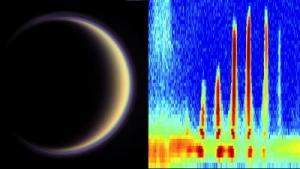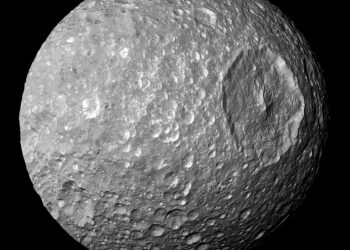
Titan is in the spotlight again. The Cassini probe has provided once more valuable data that scientists are analysing; the data seems to confirm the fact that there are heavy negative ions in the upper regions of Titan’s atmosphere. These could be the organic building blocks for molecules and this discovery is unexpected because of the chemical composition of the atmosphere (which lacks oxygen and mainly consists of nitrogen and methane). The observation has now been verified on 16 different encounters.
Professor Andrew Coates, researcher at UCL’s Mullard Space Science Laboratory and lead author of a new paper*, says:
“Cassini’s electron spectrometer has enabled us to detect negative ions which have 10,000 times the mass of hydrogen. Additional rings of carbon can build up on these ions, forming molecules called polycyclic aromatic hydrocarbons, which may act as a basis for the earliest forms of life.”
Their existence poses questions about the processes involved in atmospheric chemistry and aerosol formation and we now think it most likely that these negative ions form in the upper atmosphere before moving closer to the surface, where they probably form the mist which shrouds the planet and which has hidden its secrets from us in the past. It was this mist which stopped the Voyager mission from examining Titan more closely in 1980 and was one of the reasons that Cassini was launched.”
This paper works with a paper previously published in Science (May 11) where the team found smaller tholins, up to 8,000 times the mass of hydrogen, forming away from the surface of Titan. The Cassini-Huygens mission is a cooperative project of NASA, the European Space Agency and the Italian Space Agency.






